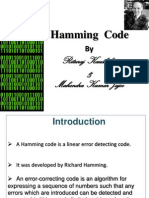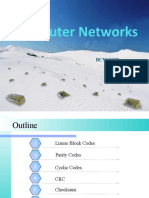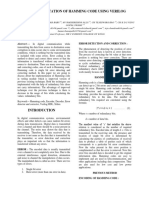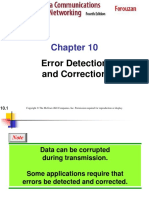0% found this document useful (0 votes)
12 views4 pagesData Link Layer Set3
The Hamming code is a method for error detection and correction that utilizes redundancy bits to ensure data integrity. It involves adding check bits at positions that are powers of 2, which help maintain even or odd parity across specific bit collections. While Hamming codes can correct single-bit errors, they can be adapted to handle burst errors through specific techniques.
Uploaded by
vedangi.gh3110Copyright
© © All Rights Reserved
We take content rights seriously. If you suspect this is your content, claim it here.
Available Formats
Download as PPT, PDF, TXT or read online on Scribd
0% found this document useful (0 votes)
12 views4 pagesData Link Layer Set3
The Hamming code is a method for error detection and correction that utilizes redundancy bits to ensure data integrity. It involves adding check bits at positions that are powers of 2, which help maintain even or odd parity across specific bit collections. While Hamming codes can correct single-bit errors, they can be adapted to handle burst errors through specific techniques.
Uploaded by
vedangi.gh3110Copyright
© © All Rights Reserved
We take content rights seriously. If you suspect this is your content, claim it here.
Available Formats
Download as PPT, PDF, TXT or read online on Scribd
/ 4























































